Today’s websites are more technologically advanced than before. Websites today are created with a variety of technologies and frameworks due to the expansion of web technologies over time, making them challenging to manage. Also, additional business logic workflows and functionalities must be added to websites because more organizations today conduct business online.
Even while your website may be doing well right now, there is no assurance that it will always operate at its best. Your website needs ongoing maintenance to stay in good shape, just like a car. To help you understand what must be done for website maintenance and support, we’ve produced this website maintenance checklist. In this post, we’ll talk about things like
- What is Website Maintenance?
- Why Is It Important to Have Website Maintenance and Support Services?
- Checklist for Website Maintenance Best Practices
- How Much Does It Cost to Maintain a website?
Table of Contents
ToggleWhat is Website Maintenance?
Today’s businesses need websites, eCommerce platforms, and online and mobile applications. Also, maintaining websites in good condition requires proactive maintenance assistance. Some areas that require continual monitoring and maintenance services include security upgrades, patch updates, server checks, performance checks, SEO, etc.
It’s crucial for businesses to have an appealing and well-maintained website if they want to attract and keep clients. Many people, nevertheless, don’t take it seriously. Maintaining the efficiency of your business requires routine website monitoring.
Why Is It Important to Have Website Maintenance and Support Services?
- Platform Updates
Nowadays, a wide variety of open-source and licensed frameworks, third-party modules, plugins, extensions, etc., are used to build websites. All these pieces of software need to be updated frequently and to be cutting edge to maintain the website operating at its best.
Any out-of-date plugins or modules might impair a site’s functionality or even cause it to crash. Consequently, proactive site maintenance is essential to stay on top of all these platform updates.
- Security
The key justification for updating and maintaining your website is security. WordPress, Drupal, Joomla, Shopify, AEM, Sitecore, Magento, or any other platform could be used to construct your website. To stop hackers from attacking your websites, these platforms require ongoing security updates. The security of your website could be seriously jeopardized if these security upgrades are not made in a timely manner.
- SEO
Having customers, consumers, or an audience is the whole idea of launching a business. To increase traffic to your website, you must consistently update it. On its search engine results page (SERPs), Google ranks websites that contain the most recent and relevant information. To rank a website in SERPs, Google’s search ranking algorithms consider several factors such as load time, site architecture, UI/UX, and more.
So, to continually enhance your organic SEO results, websites must adhere to all SEO best practices and be up to date in all respects.
- Customer Engagement
A website must offer visitors a top-notch overall experience. Websites cannot engage or keep visitors for an extended period without a positive user experience. Consumer engagement and user experience are influenced by several variables, including navigation, site architecture, performance, and relevant content. All of them require ongoing effort and improvements.
- Brand Image
Websites can serve a variety of functions, including informational, business-related, revenue-generating, and marketing initiatives. Whatever the objective, a website’s brand identity, reputation, and appearance are essential components. To retain a strong brand and goodwill, a website must be functional, easy to use, and interesting.
- Digital Trends and Renovation
For websites to be current and competitive in their fields, they should embrace modern, effective digital technologies and trends. Business outcomes can be greatly aided by digital enablers. Digital enablers can significantly assist with customer acquisition, revenue per customer or transaction, customer retention, and expansion. Only a proactive website support and maintenance plan will be able to accomplish this.
Checklist for Website Maintenance Best Practices
The results of ignoring crucial maintenance activities may be severe. Even a little security breach could put your website at considerable risk given that people are actively trying to break into WordPress websites. The Wordfence Web Application Firewall stopped nearly 4 billion malicious requests in the first half of 2021. Nevertheless, WordPress maintenance involves more than just identifying serious problems.
Little issues over time might steadily lower your site’s functionality and search engine results. You can lessen the detrimental effect these small mistakes may have on your website by identifying and fixing them as soon as possible.
Evaluation of various areas of your site is another aspect of maintenance. This puts you in a good position to see where you can improve your content and encourage more conversions. You may maintain your website’s competitive edge in this way.
Here’s a list of tasks you can perform to ensure your website’s overall maintenance-
Weekly Tasks
Let’s begin with routine maintenance tasks. There are 5 activities that we advise you to do each week-
1. Review Your Metrics
Most popular websites collect a variety of information. This entails monitoring user behavior, your top traffic sources, and the content that generates the highest conversion rates.
You can identify issues that require attention by routinely reviewing your stats. The key word here is speed. Weekly reviews of this data are helpful for maintaining competitiveness.
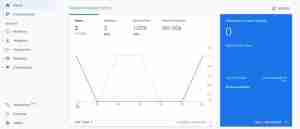
You could find it difficult to accurately assess your performance if you only see one aspect of it. If so, you might also want to look at the analytics of your rivals.
2. Regular Site Backup
One of the most crucial things on your to-do list is to regularly create backups. You run the danger of losing all your most recent work or maybe your entire website if you fall behind. Although you can make backups by hand, certain hosting companies can take care of this important maintenance job for you.
You may also quickly make a copy of your website if you need to back it up on demand. We centrally store all your backups, and for added convenience, we provide simple one click restore.
3. Moderate Comments
Visitors are more likely to engage with your website when the comment section is active. Nevertheless, there is a negative side to comment sections. Attackers may try to use spammy comments to lure you into publishing malicious stuff.
Moreover, some comments might have offensive or irrelevant language. This may have a negative impact on your website. You might want to employ a comment moderation plugin like Akismet Spam Protection for this.
WordPress’ default settings allow you to hold all submissions in an approval queue. Visitors anticipate that their comments will be shown on your website in a timely manner. It’s wise to check this queue at least once a week if you reserve comments for review.
4. Update Plugins and Themes Regularly
Research shows that outdated plugins, themes, or even obsolete versions of WordPress are present on 86% of hacked WordPress websites. This makes sense because updates frequently include patches for existing security flaws or new security measures.
It makes sense to frequently check the WordPress dashboard for any upgrades to keep the bad people out.
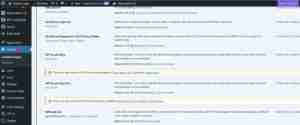
You might want to think about enabling auto-updates for your themes and plugins while we’re including this action on our maintenance checklist to increase security. You may also enable automatic updates for WordPress core in the Dashboard > Updates menu if you’re using WordPress 5.6 or higher.
5. Scan for Malware
Although WordPress is known for being a secure platform, no program is faultless. It’s crucial to scan for malware to keep your website in top condition. There are a lot of malware scan plugins such as VaultPress, Astra Security Suite, Sucuri SiteCheck Scanner, iThemes Security, and more.
Monthly Tasks
You can stay one step ahead of the competition by keeping an eye on your website’s speed and search engine performance. Here is your monthly website maintenance checklist for this-
6. Test Your Site Speed
The effectiveness of your website greatly affects its success. According to studies, when a website takes longer than three seconds to load, 40% of visitors leave. Even if visitors do stay on a website, it is unlikely that they will be impressed by its slowness.
Your SEO may also be impacted by page performance, especially considering the debut of the Core Web Vitals initiative.
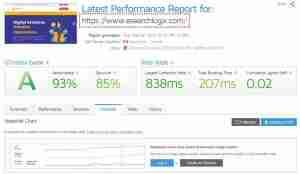
A program like GTmetrix or Google PageSpeed Insights can be used to test the speed of your website.
Google has also developed a specific reporting tool if the performance of your Core Web Vitals worries you. This assesses your website in relation to the Core Web Vitals criteria.
7. Create New Content
A tried-and-true method of converting one-time visitors into devoted repeat clients is by consistently producing fascinating, pertinent material. In addition to positioning you as an authority in your field, content can increase conversions.
Your posts and pages are read by more than just people. This content will help search engines comprehend the purpose of your website. Thus, you can increase your chances of showing up in pertinent search engine results by consistently releasing resources like blog posts and articles.
You might want to think about working with an accomplished SEO team if you want to make sure you’re winning the Search Engine Optimization (SEO) game. To support your keyword strategy, our professionals can produce and distribute a steady supply of top-notch content.
8. Improve Your Site’s SEO
With 40 to 60 billion searches taking place on Google each month in the United States, SEO is one upkeep duty you cannot afford to ignore. Since your website is already created, it’s likely that you’ve already determined the keywords you want to rank for. Although keyword popularity can fluctuate over time, it is helpful to access whether you still need to modify your strategy. Using a tool like Semrush’s Keyword Overview or Keyword Magic, you can see the current search volume.
You should check every aspect of your website to make sure it’s helping you rank for those terms once you’ve made any required adjustments to your keyword strategy.
Quarterly Tasks
Let’s look at a few website components that are all too frequently disregarded. Here are 7 things you should do every three months.
9. Change Your Passwords
For your website to remain secure against unwanted access, you must choose a strong, complex password. It’s crucial that you use the most recent best practices when creating your password, such as two-factor authentication.
Change your password every three months, even if you’re abiding by the regulations. In that case, even if your password is compromised, it will reduce the amount of time the thief spends in your compromised account.
Also read: How to Reset the WordPress Admin Password (3 Methods)
10. Check and Fix Broken Links
There are numerous reasons why links can break. For instance, you might wrongly implement a redirect or delete a page. Although widespread, these URLs are terrible for both your SEO and User Experience (UX). A broken URL will be crawled by search engine bots to confirm that it is indeed broken. This is a waste of crawl budget.

Tools like SEMrush or Ubersuggest can be used to check for faulty URLs. Any broken URLs found by these tools while crawling your website will be shown in the Crawled pages section. A broken link might occasionally be fixed by manually modifying the URL. As an alternative, you may employ a plugin like Redirection.
11. Delete Unnecessary Plugins and Themes
Every theme or plugin adds code to your website, creating a vulnerability that hackers could use. In fact, 96% of WordPress vulnerabilities are caused by themes and plugins.
It’s a good idea to periodically review the installed themes and plugins on your website and remove those that are no longer needed.
Just in case you need to restart the software later, you could be tempted to simply disable it. Deletion is always the safest course of action because hackers might still be able to access deactivated code.
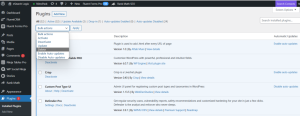
By deleting any outdated photos, movies, or audio files, you can further limit your attack surface. To do this, use a Secure File Transfer Protocol (SFTP) client to connect to your website, then navigate to the wp-content directory to find and remove those superfluous files.
12. Optimize Your Database
All your data is kept in a database by WordPress. The size of your database affects how long it takes the server to retrieve data from your tables.
By optimizing your database, you may reduce server load and shorten page load times. Your database can be optimized with the aid of phpMyAdmin. In phpMyAdmin, select Databases. Next, pick the database you want to optimize.
13. Test Your Site’s Forms
Forms are often used on websites to collect leads and encourage conversions. Certain forms also include essential features, such as login forms.
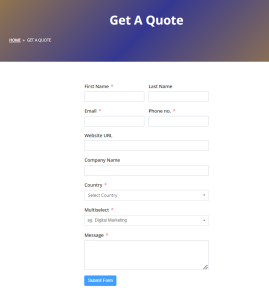
Given their importance, it is advisable to make sure that your forms are functioning effectively. We suggest reviewing the entire submission process to ensure that you’re appropriately logging user input.
14. Test Your Checkout Process
If you accept payments through your website, the checkout process is the heart of your business. You may be missing out on a significant number of sales if there is an issue with this process. In the worst-case scenario, it’s possible that your system won’t work at all, in which case your revenue will be nil.
Considering this, we advise making sure your checkout is operating as it should. Most payment processors, including the well-known WooCommerce platform, feature a specific testing mode.
It seems sense to keep an eye out for ways to make the purchasing process better while testing. Customers may be discouraged from completing the finish line by an intricate payment process. In fact, 34% of customers will leave their shopping carts empty if they are required to register.
The result would be beneficial if you could simplify the payment procedure as part of your review.
15. Check Your Social Media Links
Social networking is a powerful tool for growing your audience and retaining the attention of your present one. By posting frequently on social media platforms, you can keep your brand at the front of your followers’ minds and ensure their long-term involvement. Many websites prominently show social networking buttons with links to follow your accounts and share your content.
Yet there’s always a danger that third-party tools could alter how they handle your requests while working with them. They might even make technological adjustments that update the social media material on your website.
You may be losing out on a ton of followers and shares if your social media URLs are broken. As a result, it’s crucial to periodically examine them to make sure they function.
Annual Tasks
These annual tasks don’t have to be done frequently throughout the year. Therefore, we advise making time each year to carry them out.
16. Schedule User Testing
This is where you test your website on actual users to see how user-friendly it is. It’s likely that at least one round of usability testing was conducted when you first created your website.
Nonetheless, there is a trend for website user interaction to change over time. The way the normal internet user interacts with your website can be significantly altered by new technological advancements, devices, or browser changes.
We advise arranging annual usability testing to make sure you keep giving customers a positive experience.
17. Review Your Domain and Hosting Renewals
The domain name is one of the most important decisions you may make. A powerful domain will enhance your branding.
Imagine losing this important aspect of your online persona right now. If you get behind on your renewals, you might try to access your website one day and discover that your domain has expired. Therefore, it is a good idea to check the status of your domain and hosting renewals.
Even if you choose auto-renewals, we always advise carefully checking that everything is configured properly, especially your payment details. The renewal will not work if your payment card has expired, and you risk losing access to your domain or site hosting.
18. Update Your Header, Footer, and Legal Policies
Your header and footer are valuable web space. Usually, you’ll use these elements to display pertinent data, such your contact information or business hours. You can lose conversions if this information is outdated.
You must promptly alter the header and footer if you make any substantial changes to how you do business. To make sure that no changes have escaped notice, it never hurts to conduct an annual check.
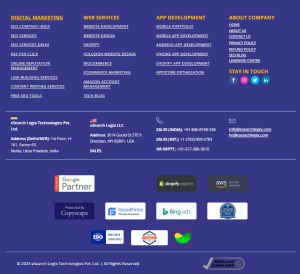
Your website also has a header and a footer. They are therefore ideal for placing your audience’s most crucial pages at their fingers.
If any links are found to be out of date while reviewing these components, you might want to remove them. Also, there might be some fresh content that merits a prominent position in your header or footer.
Most websites provide a variety of legal regulations, such as privacy statements and information about copyright. It\’s always worthwhile to make sure you’re in compliance with the most recent laws because they can change over time.
19. Review Your ‘About’ Page
Customers can be persuaded to do business with you by reading an engaging About page. Also, it might help others get a better idea of who you are personally.
Too many businesses create an About page despite its significance and never return to it. It’s important to conduct an annual evaluation to make sure that this page is consistently a true reflection of your business.
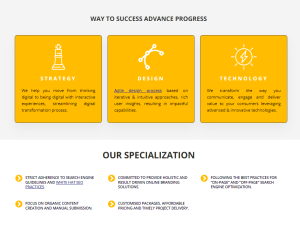
You might seek chances to include exciting new developments, like a significant new client. You might also make any obsolete changes, like altering a worker’s bio to reflect a change in job title.
20. Perform a Content Audit
Posting interesting, pertinent information lets visitors know that your website is active and that you are a subject matter expert. Also, this information can assist you in raising your search engine ranks.
We advise conducting an annual content audit to make sure you’re getting the most value possible from this content. Here, you may evaluate the performance of your site and catalogue all its content.
By doing so, you can determine which subjects and presentation styles generate the most visitors and conversions. On the other hand, you can identify the information that doesn’t seem to be appealing to your target market. You can utilize this priceless knowledge to improve your content strategy.
How Much Does It Cost to Maintain a website?
- Small Personal Blog
A small blog often has very few criteria and little traffic. With a blog platform like Google Blogger, this can be hosted without charge. Another option is to host it yourself using a platform like WordPress, which has cheap monthly fees due to hosting and domain name renewal.
- Medium-sized, active blog with a sizable following
You should generally be self-hosted with a few changes if you run a busy blog that generates cash. This will necessitate more frequent website upkeep, marketing efforts, backups, and financial commitment.
- Company Website for Marketing Purposes
This website must be hosted either on your premises or in the cloud, unlike the medium-sized blog. For web maintenance, routine updates, marketing adjustments, and backups, a good website design template or customized theme and company information, workflows, and features may call for a medium-high effort.
- Large-scale, custom e-commerce websites
Since you must be knowledgeable about web upkeep, accessibility, performance, security, and SEO, this will require a larger financial expenditure. The websites produce income while you maintain a lot of content, code customization, and user data. You should look for a website maintenance company to handle your website demands if you don’t have an IT team on staff.
- Individual Web Application
Your biggest monetary commitment will be this. Your web application was created from the ground up especially for you and needs you to be always in top functional condition, or your business will suffer. To keep a careful check on the website maintenance and support, this probably requires a professional team of developers from a Web maintenance firm.
Conclusion
Currently, most comprehensive strategies include operating at least some of the business online. Yet creating a website merely for the purpose of putting it aside afterwards is a horrible idea.
Your website must be cleaned, just as you wouldn’t rent an office and never clean it. You can continuously advance in terms of security, site speed, digital marketing, social media presence, website design, and more by executing routine website maintenance, which will result in business growth.
Make a checklist of everything you need to do and develop a schedule for website upkeep. This will assist in standardizing your procedures and making them portable for you or your staff to use.








